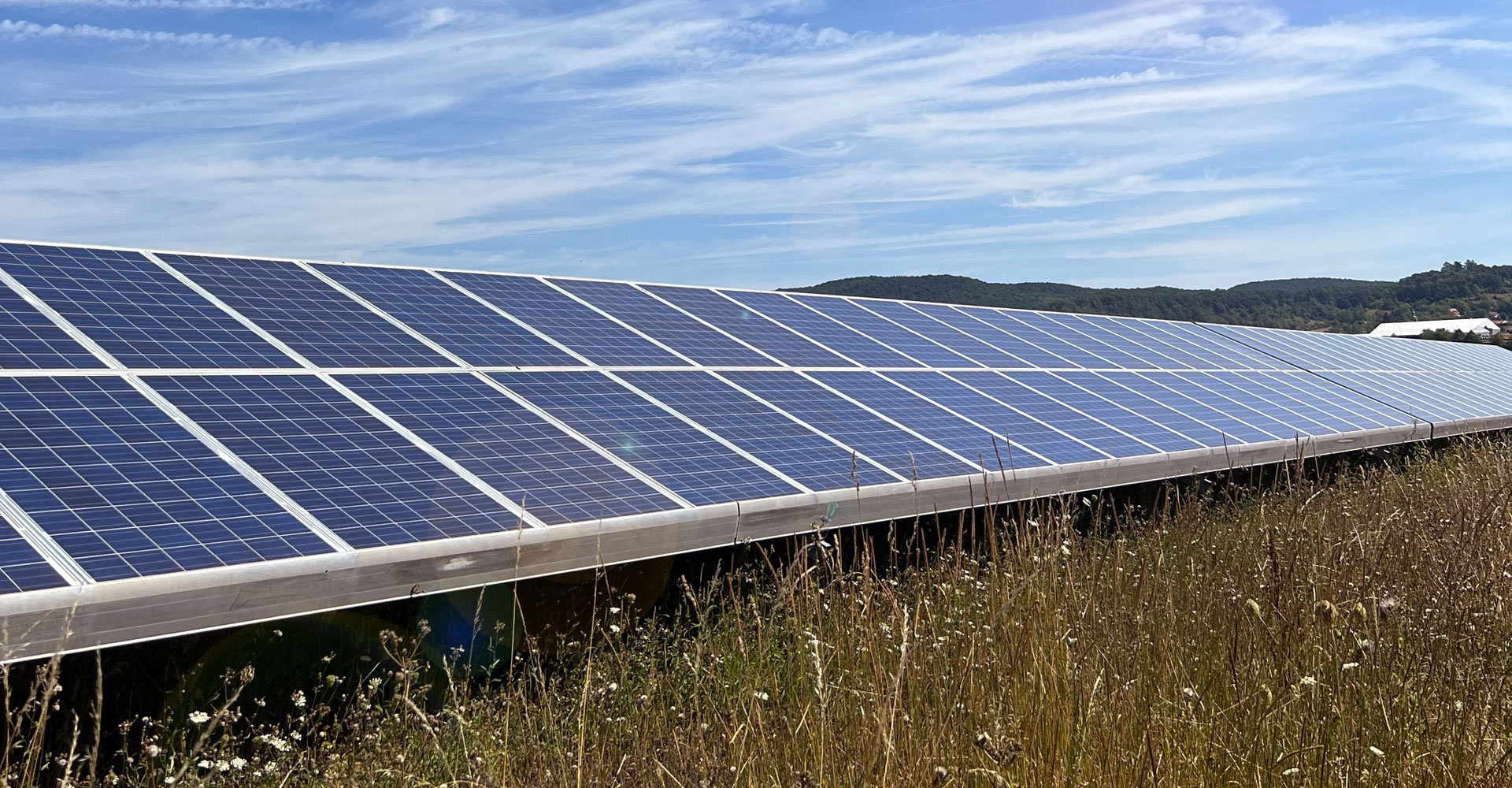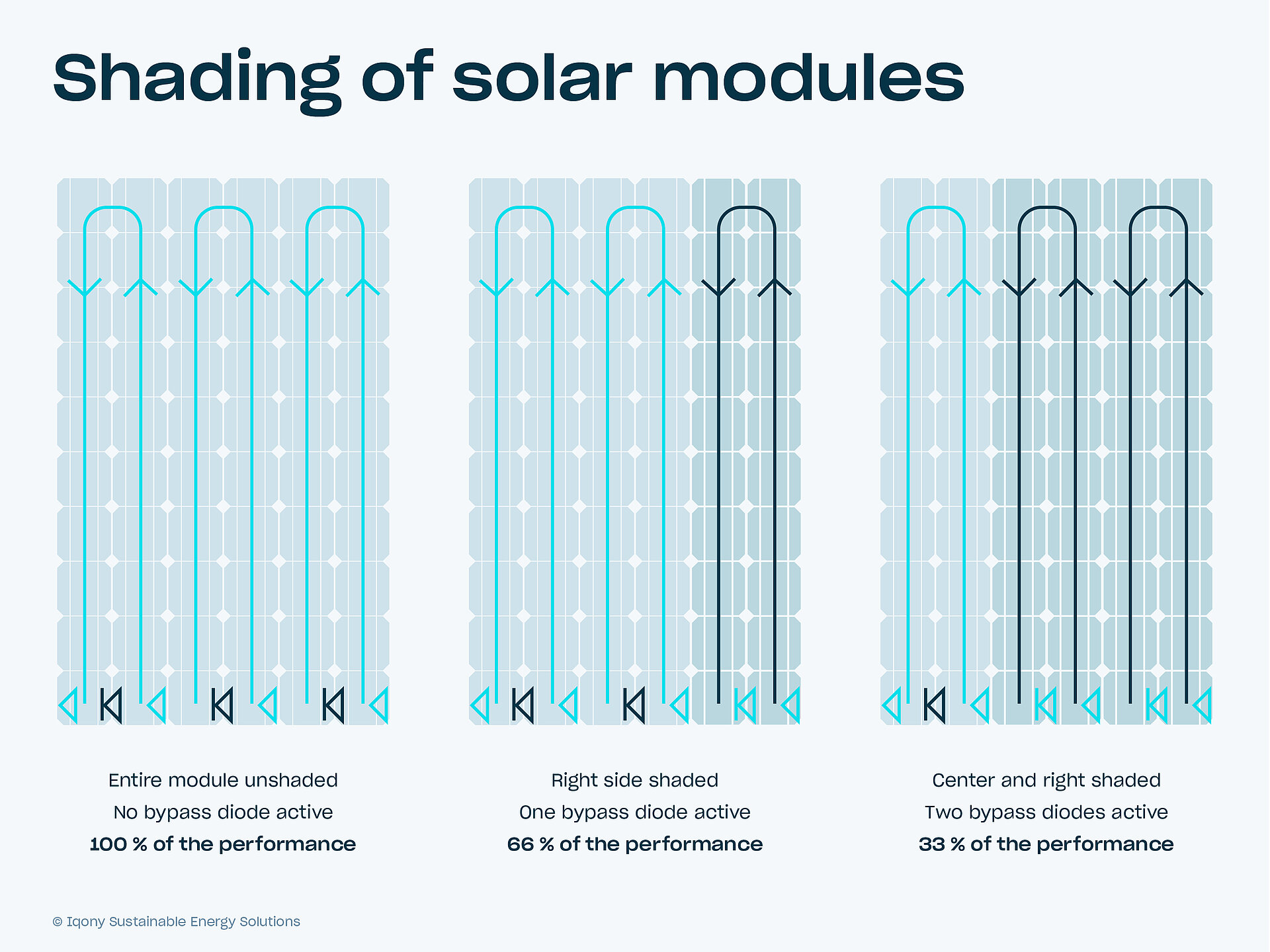
Ten misconceptions about photovoltaics
There is nothing to these myths about solar systems
We are currently experiencing a veritable solar boom: PV systems are being installed in large numbers on farmland, commercial buildings, stables and house roofs. Accordingly, the share of renewable energy in general electricity consumption is rising continuously - it now stands at 55 per cent. At the same time, however, there are still reservations. For example, company roofs in particular are often not yet fitted with solar panels, even though it would bring many benefits for companies, or vacant areas are not considered for solar installations because there are too many reservations on the part of property owners. Reasons for this reluctance include incorrect assumptions about photovoltaics. We therefore take a closer look at some common myths and misconceptions about PV systems.
Myth 1: Solar systems do not produce electricity in bad weather.
Myth 2: Photovoltaics is only worthwhile in sunny areas.
Myth 3: A little shade significantly impairs the entire system.
Myth 4: Solar systems are not durable and need to be replaced often.
Myth 5: The production of solar panels is more harmful to the environment than their use.
Myth 6: Solar parks lead to the massive destruction of habitats.
Myth 7: Solar systems are high-maintenance and expensive to maintain.
Myth 8: Solar installations block land for food production.
Myth 1: Solar systems do not produce electricity in bad weather.
We keep hearing that PV systems supposedly only work when the sun is shining and do not generate electricity when it is cloudy or raining. This is not correct! In fact, photovoltaics also work well in cloudy weather and on cold days. This is because modern solar modules can utilise a broad spectrum of light to generate electricity. As soon as sunlight hits the solar cells - and this does not have to be direct sunlight - electricity is produced.
PV systems therefore work all year round, even in winter and on less sunny days. However, the PV yield is lower when it is cloudy than when it is sunny.
Myth 2: Photovoltaics is only worthwhile in sunny areas.
Some critics claim that the sun doesn't shine often enough in Germany and that photovoltaic systems are only worthwhile in sunnier regions of southern Europe or Africa. This is not true. The hours of sunshine in Germany are perfectly sufficient to produce solar power. On average, the sun shines for almost 2,000 hours a year in this country. This means that a PV system can produce around 200 kilowatt hours per square metre.
Of course, there is a higher yield in sunnier regions. And in this country, spring and summer produce the best yields. But even in the autumn and winter months, a solar system produces enough electricity to make the investment worthwhile. This is also due to the increasingly powerful solar modules.
Myth 3: A little shade significantly impairs the entire system.
If the sky is full of clouds or the solar system is in the shade, a PV system produces less electricity. That is correct. If an entire module is shaded, the solar yield can be reduced by up to 90 per cent. If only part of the module is shaded, the yield is reduced roughly in proportion to the shade: if a third of the module is in the shade, around a third less solar energy is generated. The reason for this is that in the event of partial shading, the bypass diodes in the modules switch off this part and divert the current.

In any case, it is important to plan the PV system precisely in order to avoid yield losses due to shading. At Iqony Sens, we support system operators with shading analyses, yield simulations and professional advice.
Myth 4: Solar systems are not durable and need to be replaced often.
Solar panels are designed for outdoor use and can therefore withstand a lot. Harsh weather conditions are no problem for them. Only severe storms or lightning strikes can cause damage that makes it necessary to replace modules.
The service life of modern PV modules is 25 years or more. During this time, the output remains largely constant. A small loss of output that can occur over time can be minimised through regular maintenance. In most cases, manufacturers guarantee an output of around 80 per cent even after 20 years. According to studies by Fraunhofer ISE, however, the power loss is significantly lower.
The statement that solar systems are not durable is therefore wrong. Companies can rely on stable energy generation for decades, which pays off. With further technological advances, the service life of PV systems could even increase in the future.
Myth 5: The production of solar panels is more harmful to the environment than their use.
Materials and energy are required to produce solar modules. It is often claimed that the production of PV modules consumes more energy than they can later produce. However, a study by the German Federal Environment Agency has shown that after just 0.9 to 2.1 years, solar systems have already generated more energy than was required for their production. According to the Fraunhofer Institute, a modern photovoltaic system generates at least ten times more energy over its entire service life than was required for its production.
As far as the materials required for the production of solar cells are concerned, substances such as silicon, aluminium and glass as well as various plastics are harmless - and largely recyclable. Recycling technology has developed enormously in recent years and around 80 % of a solar module can now be recycled very efficiently. Incidentally, PV modules have been subject to the so-called "take-back obligation" in the EU for some time now.
Overall, it can be stated that the ecological benefits of PV systems clearly outweigh the consumption of resources and there is no reason to question the sustainability of solar systems.
Myth 6: Solar parks lead to the massive destruction of habitats.
The construction of ground-mounted PV systems is repeatedly criticised for destroying landscapes and ecological habitats. However, studies show the opposite: solar parks can even create new, species-rich habitats. The German Association of the New Energy Economy (bne) has analysed 75 solar parks in nine federal states and found that the biodiversity on site is positively influenced if the PV systems are designed in an environmentally friendly way. The reasons for this include protective fencing, the avoidance of pesticides and the extensive use and maintenance of the grassland between the rows of modules. The distance between the rows is an important factor for biodiversity: the greater the distance, the higher the species density.
Agri-PV systems and in particular their special form of eco-PV can also contribute to biodiversity on ground-mounted photovoltaic systems.
Solar parks can therefore promote biodiversity - provided that the management plans are designed accordingly to create habitats. Against the backdrop of the ongoing extinction of species, photovoltaics and biodiversity must be considered together.
Myth 7: Areas are sealed by solar installations.
When an area is described as "sealed", this means that it has been altered by human activity to such an extent that the surface of the ground is sealed. Typical examples of sealed surfaces are roads, car parks, buildings and other built-up or asphalted areas that can no longer allow rainwater to pass through. This can destroy natural habitats, which can have a negative impact on the environment.
When installing a ground-mounted photovoltaic system, there is no sealing of the ground as only minimal changes are made to the soil. Instead, concepts for solar parks are increasingly being developed with biodiversity in mind, thereby preserving natural habitats. The Solar Package 1 adopted in April 2024 defined five rules for the development of solar parks.
Myth 8: Solar installations block land for food production.
In reality, agricultural production is taken into account when planning solar installations so that it is not affected. Agri-photovoltaic projects, for example, offer the possibility of utilising an area for both food production and energy generation from solar modules: an extremely sustainable and efficient use of the available space.
Conventional solar parks, on the other hand, are predominantly built on areas that are not suitable for food production. These are, for example, areas along motorways and railways, disadvantaged areas, conversion areas or unused industrial estates.
In addition, unused roofs and car parks offer further areas for installing solar systems.
Myth 9: Solar systems are high-maintenance and expensive to maintain.
The maintenance of a solar installation is important in order to avoid performance losses. Without regular monitoring, damage to the system may go unrecognised, resulting in less solar power being produced and a reduced return on investment. In addition, the insurance company could cause problems if, in the event of damage, it transpires that maintenance has been neglected.
An inspection or maintenance of the PV system should be carried out about once a year and is usually not very costly. With the help of Artificial Intelligence (AI), the maintenance of a solar power system can be made even more efficient. In this way, the functionality of the PV system can be ensured at all times in everyday life, and companies benefit from low operating costs, high system availability and, of course, favourable and constant electricity prices. With its own O&M experts and the intelligent Sensaia AI solution for solar park monitoring and predictive maintenance, Iqony Sens offers the optimum services for your system.
Myth 10: Without storage, renewable energy makes no sense.
Renewable energy such as wind and solar energy can also be used sensibly without storage. Modern electricity grids are capable of balancing out fluctuating energy generation from renewable sources. In addition, various technologies such as load management and grid expansion can help to compensate for fluctuations.
However, storage systems play an important role in optimising the use of renewable energy by storing surplus energy and releasing it when required. Technological advances have led to increasingly efficient and cost-effective storage options becoming available. Storage systems are therefore a useful addition, but not absolutely necessary for the operation of renewable energy systems.
Conclusion
On closer inspection, the many myths surrounding photovoltaics turn out to be unfounded. PV technology has made enormous progress in recent decades, which reduces the risks for plant operators. For example, the use of photovoltaics today - especially in the form of large PV systems on industrial buildings or farmland - offers many cost benefits. Photovoltaics also helps to fulfil legal requirements (keyword: commercial solar obligation) and CSR criteria.
Published: 24 July 2024
Picture: Iqony Sens
Free area available?
We lease your area and implement photovoltaic systems.
Lease your land for photovoltaics and build solar parks for the energy transition. From a size of more than five hectares, Iqony Sens will realise your PV project and provide you with a fixed income for the next 30 years.
